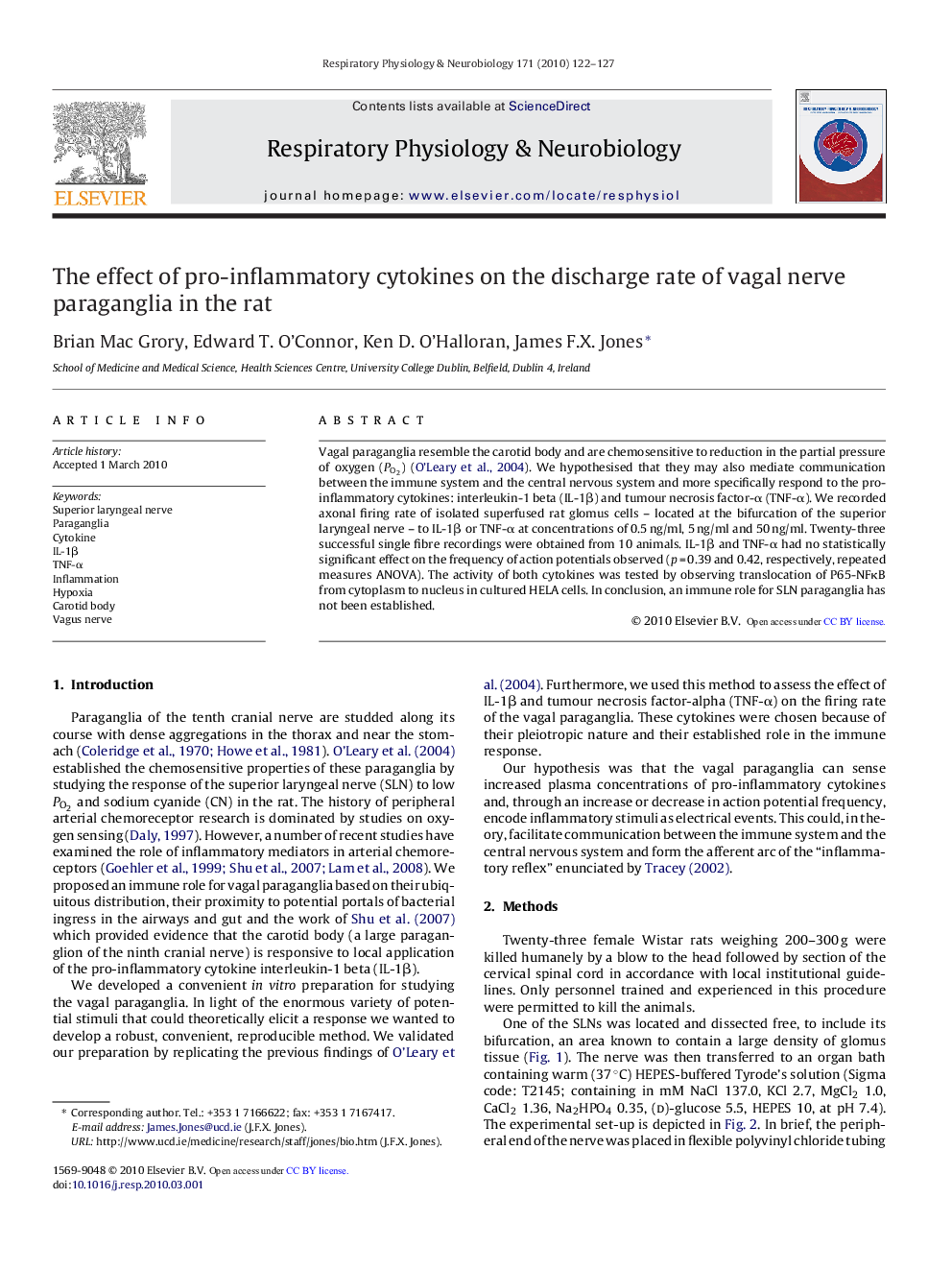| کد مقاله | کد نشریه | سال انتشار | مقاله انگلیسی | نسخه تمام متن |
|---|---|---|---|---|
| 5926605 | 1167381 | 2010 | 6 صفحه PDF | دانلود رایگان |

Vagal paraganglia resemble the carotid body and are chemosensitive to reduction in the partial pressure of oxygen (PO2) (O'Leary et al., 2004). We hypothesised that they may also mediate communication between the immune system and the central nervous system and more specifically respond to the pro-inflammatory cytokines: interleukin-1 beta (IL-1β) and tumour necrosis factor-α (TNF-α). We recorded axonal firing rate of isolated superfused rat glomus cells - located at the bifurcation of the superior laryngeal nerve - to IL-1β or TNF-α at concentrations of 0.5 ng/ml, 5 ng/ml and 50 ng/ml. Twenty-three successful single fibre recordings were obtained from 10 animals. IL-1β and TNF-α had no statistically significant effect on the frequency of action potentials observed (p = 0.39 and 0.42, respectively, repeated measures ANOVA). The activity of both cytokines was tested by observing translocation of P65-NFκB from cytoplasm to nucleus in cultured HELA cells. In conclusion, an immune role for SLN paraganglia has not been established.
Journal: Respiratory Physiology & Neurobiology - Volume 171, Issue 2, 30 April 2010, Pages 122-127